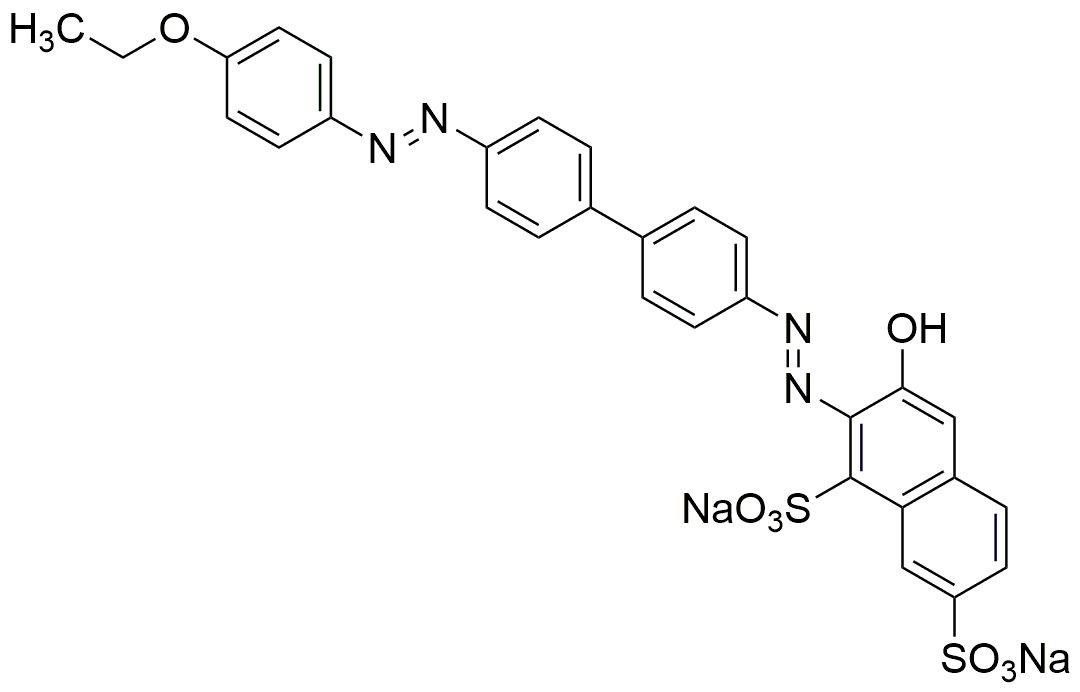Direct scarlet B is widely utilized in research focused on:
- Dyeing Textiles: This chemical is primarily used in the textile industry for dyeing fabrics, providing vibrant red shades that are highly sought after in fashion and home textiles.
- Biological Staining: In laboratories, it serves as a staining agent for biological specimens, aiding in the visualization of cellular structures under a microscope, which is crucial for histological studies.
- Food Industry: Direct scarlet B is also applied as a food colorant, enhancing the visual appeal of various food products while adhering to safety regulations.
- Cosmetics: This compound finds its place in the cosmetic industry, where it is used in products like lipsticks and blushes to provide a rich, long-lasting color.
- Research Applications: In scientific research, it is used in assays and experiments that require colorimetric analysis, allowing researchers to quantify reactions based on color intensity.
General Information
Properties
Safety and Regulations
Applications
Direct scarlet B is widely utilized in research focused on:
- Dyeing Textiles: This chemical is primarily used in the textile industry for dyeing fabrics, providing vibrant red shades that are highly sought after in fashion and home textiles.
- Biological Staining: In laboratories, it serves as a staining agent for biological specimens, aiding in the visualization of cellular structures under a microscope, which is crucial for histological studies.
- Food Industry: Direct scarlet B is also applied as a food colorant, enhancing the visual appeal of various food products while adhering to safety regulations.
- Cosmetics: This compound finds its place in the cosmetic industry, where it is used in products like lipsticks and blushes to provide a rich, long-lasting color.
- Research Applications: In scientific research, it is used in assays and experiments that require colorimetric analysis, allowing researchers to quantify reactions based on color intensity.
Documents
Safety Data Sheets (SDS)
The SDS provides comprehensive safety information on handling, storage, and disposal of the product.
Product Specification (PS)
The PS provides a comprehensive breakdown of the product’s properties, including chemical composition, physical state, purity, and storage requirements. It also details acceptable quality ranges and the product's intended applications.
Certificates of Analysis (COA)
Search for Certificates of Analysis (COA) by entering the products Lot Number. Lot and Batch Numbers can be found on a product’s label following the words ‘Lot’ or ‘Batch’.
*Catalog Number
*Lot Number
Certificates Of Origin (COO)
This COO confirms the country where the product was manufactured, and also details the materials and components used in it and whether it is derived from natural, synthetic, or other specific sources. This certificate may be required for customs, trade, and regulatory compliance.
*Catalog Number
*Lot Number
Safety Data Sheets (SDS)
The SDS provides comprehensive safety information on handling, storage, and disposal of the product.
DownloadProduct Specification (PS)
The PS provides a comprehensive breakdown of the product’s properties, including chemical composition, physical state, purity, and storage requirements. It also details acceptable quality ranges and the product's intended applications.
DownloadCertificates of Analysis (COA)
Search for Certificates of Analysis (COA) by entering the products Lot Number. Lot and Batch Numbers can be found on a product’s label following the words ‘Lot’ or ‘Batch’.
*Catalog Number
*Lot Number
Certificates Of Origin (COO)
This COO confirms the country where the product was manufactured, and also details the materials and components used in it and whether it is derived from natural, synthetic, or other specific sources. This certificate may be required for customs, trade, and regulatory compliance.


